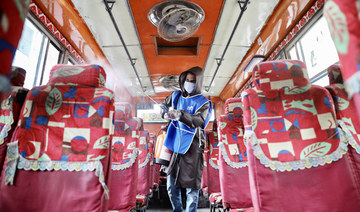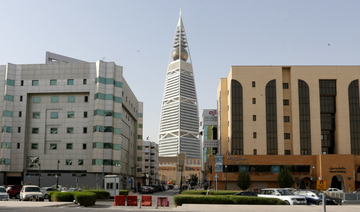LONDON: Governments and central banks are injecting eye-popping sums into markets and applying emergency policy remedies as they try to counter the impact of the coronavirus on the global economy.
The pandemic which has upended all normal life has seen markets crash as world growth faces its biggest crisis since 2008.
AFP surveys responses by major economies as the coronavirus has spread from China to infect the rest of the world, sparking national lockdowns and crippling businesses.
Saudi Arabia, which holds the G20 presidency, has called for an extraordinary summit of the group’s leaders next week. As with all other gatherings now, it would be in “virtual” format.
Europe is now the centre of the Covid-19 outbreak and governments have scrambled to open the spending taps while also closing their borders.
The European Central Bank announced late on Wednesday a surprise €750 billion ($820 billion) scheme to buy government and corporate bonds, boosting funds in the system so as to help contain the economic damage from the virus.
The eurozone bank is reviving crisis-era measures to encourage bank lending to companies, but caused some disquiet last week by keeping its borrowing rates on hold.
Meanwhile, the Bank of England cut Thursday its main interest rate to a record-low 0.1 percent from 0.25 percent, only eight days after having chopped the interest rate from 0.50 percent. It also plans to buy an additional £200 billion ($235 billion) in government and corporate debt.
Berlin has unveiled €550 billion in government-backed loans “for starters” and suspended legal obligations for firms facing acute liquidity problems to file for bankruptcy.
Britain is providing £330 billion of government-backed loans to businesses, while France will guarantee €300 billion in loans to firms and has announced a separate aid package worth 45 billion euros to help businesses and employees cope.
In hardest-hit Italy, the government has promised to deliver a “very strong injection of liquidity” into the financial system to generate €340 billion in cash flows.
Spain plans to guarantee up to €100 billion in corporate loans.
Switzerland’s central bank said on Thursday it would intervene more strongly to stabilise its franc, while Norway is also considering intervention as the krone plunges.
Russia is using its foreign currency reserves to prop up the ruble and is also compensating oil producers directly when oil prices fall below $25 per barrel, as they did on Wednesday.
On Thurs-day, the Senate Majority Leader Mitch McConnell presented a $1 trillion emergency relief package to combat the mounting economic turmoil in the US.
The measure — far surpassing aid during the 2008 financial crisis meltdown — is likely to include direct cash payments to struggling families.
The package is in addition to $100 billion directed at paid sick leave and expanded unemployment benefits signed into law by President Donald Trump on Wednesday.
A bailout for US airlines could also be in the works, Treasury Secretary Steven Mnuchin hinted.
Meanwhile, the Federal Reserve has taken interest rates down to virtually zero.
The US central bank also unveiled a new credit facility to help households and businesses stay afloat, while Trump has shifted his tone after downplaying the outbreak for weeks, now appealing for bipartisan support.
Trump ordered the suspension of evictions and mortgage foreclosures for six weeks as part of the government effort to ease the pain.
On Thursday the Federal Reserve unveiled measures to help money market mutual funds, a popular investment tool, which has seen huge demand to exit as households and small businesses scramble for cash.
Canada on Wednesday announced an aid package of Can$27 billion (US$19 billion) plus more in tax deferrals, and has also cut interest rates.
The International Monetary Fund is making $50 billion available for poorer countries, and has appealed for a “global response” of the kind seen after the 2008 crash.
China, ground zero of the virus outbreak with more than 3,000 deaths, has cut interest rates and vowed a range of measures, including tax cuts and more fiscal transfers from Beijing to virus-hit regions.
New Zealand on Tuesday raided its “rainy day” fund to release NZ$12.1 billion ($7.3 billion) in stimulus spending.
Last week, Australia unveiled a $11 billion spending plan — equivalent to just under 1 percent of its gross domestic product — to help avert the country’s first recession in 29 years. On Thursday its central bank also cut interest rates to record lows.
Japan, which faces a huge financial hit from the possible postponement of the Tokyo Olympics this summer, is offering more than $15 billion in loan programmes for firms.
South Korea unveiled an unprecedented support programme for small businesses worth 50 trillion won ($39 billion).
Hong Kong’s government is giving a cash handout to every permanent resident, with a recession brought on by months of protests now exacerbated by
the coronavirus.






















